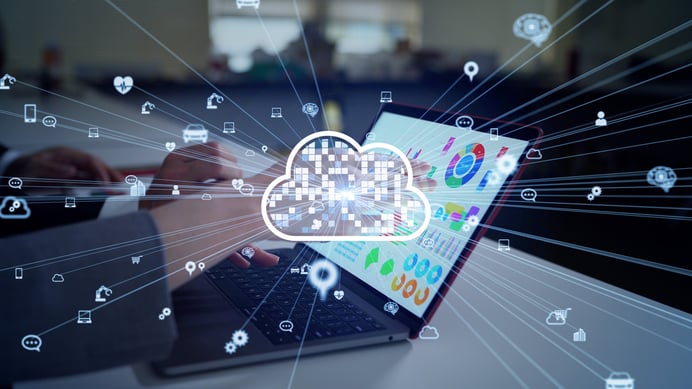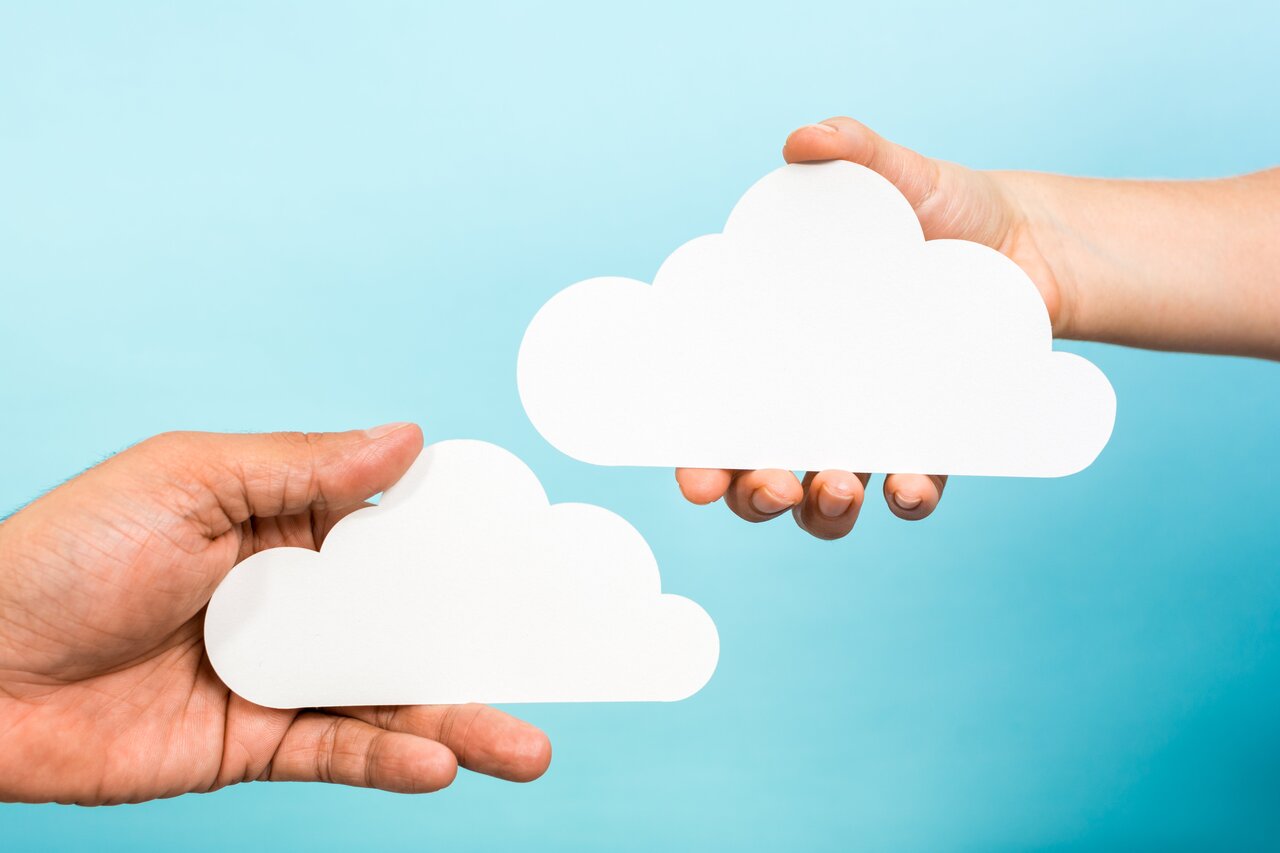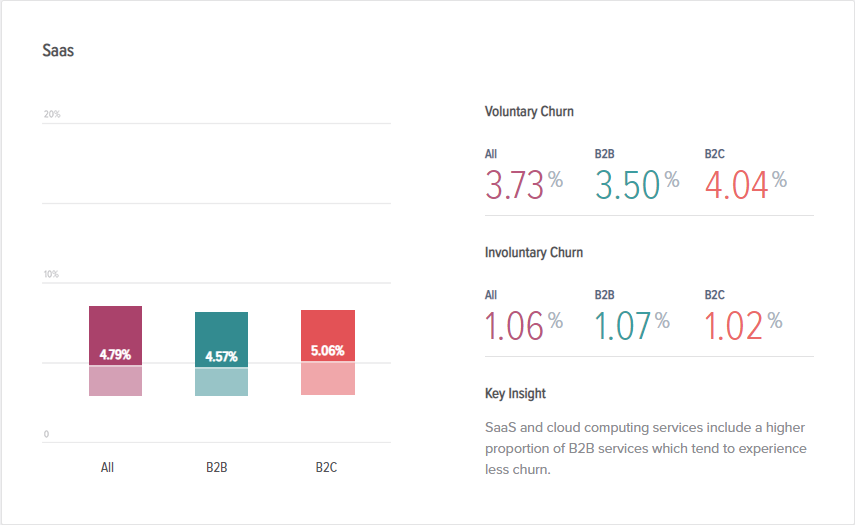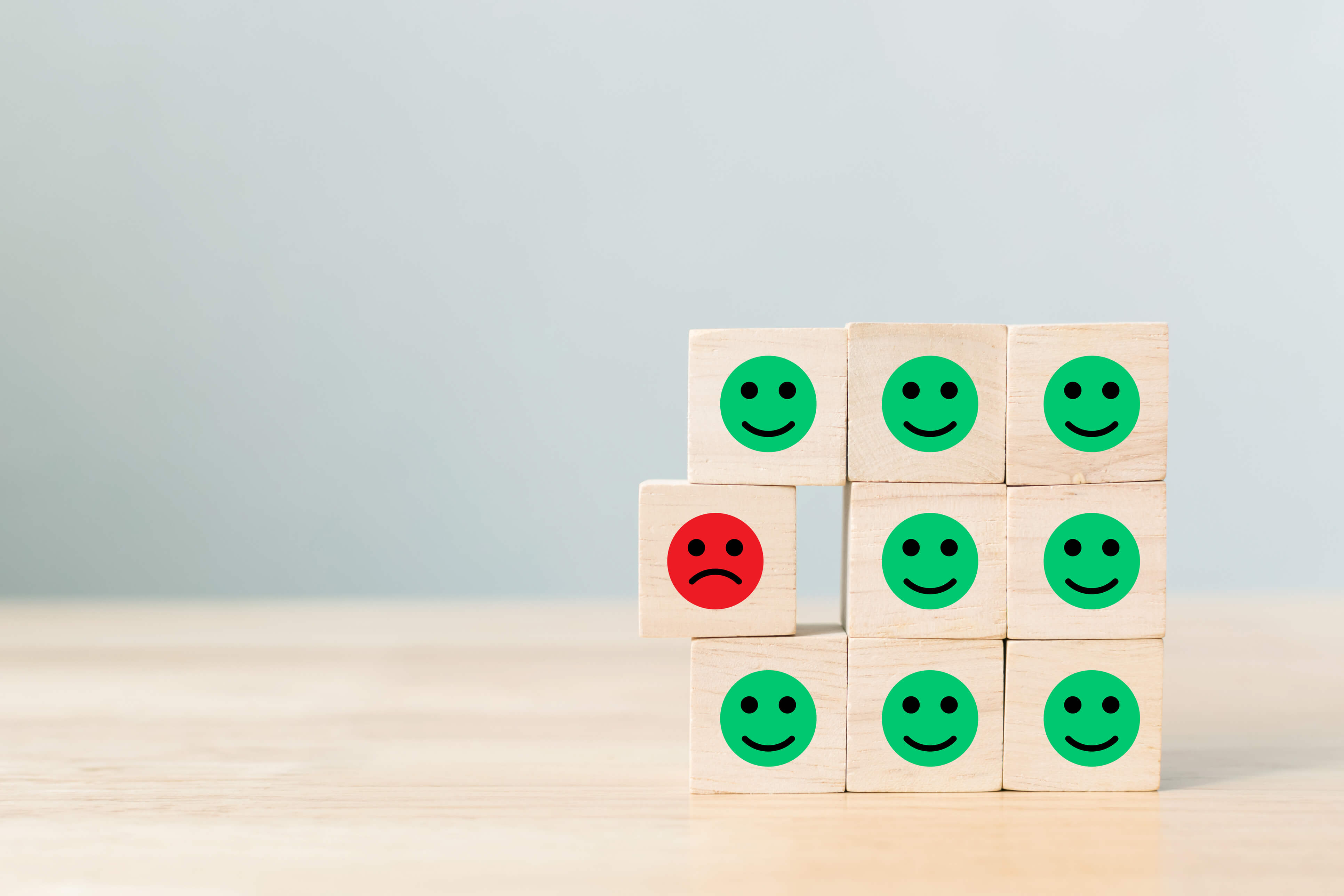That means you’re probably wondering how to market your SaaS business to get the most bang for your buck. Let’s dive in.
SaaS Insights
|
In data collected by Baremetrics, SaaS companies have reported that:
- The #1 popular monthly and annual subscription price is $99.
- 32% of participating companies offer a free plan for users.
- On average surveyed companies are losing 10% every month from failed charges on recurring payments.
|
Intro to Inbound and Outbound Marketing
Inbound and outbound marketing are two very different strategies to reach audiences, and both can be effectively used to build your SaaS customer base. A good marketer will be able to identify the right balance of approaches.
Outbound marketing is probably what many would consider traditional marketing. Think cold calling, telemarketing, and salespeople with dark leather briefcases. Outbound marketing is a numbers game in a lot of ways. You are seeking disruptive marketing strategies to bring in potential customers. With outbound marketing methods, you are casting a wide net and hoping to catch a few fish (well, customers) in the process.
Inbound marketing focuses on building customer relationships through a sophisticated set of strategies that attract customers through different stages of the buyer’s journey. Hubspot defines 3 main aspects of inbound marketing: attracting, engaging, and delighting customers.
🏁 Learn how we combined inbound strategies with PPC campaigns to reach explosive new growth. →
Why does this distinction matter for SaaS? Well, understanding these two types of marketing can help SaaS companies create a marketing strategy to blow conversions out of the water. Chances are, the best SaaS marketing plan for your B2C or B2B company will involve a combination of inbound and outbound tools.
How does SaaS Marketing Differ?
SaaS marketing differs greatly from eCommerce marketing. Rather than trying to convince consumers to buy a tangible, physical product, you are trying to convince a consumer that a service that lives in the cloud is something that they can’t live without.
A person can touch a pair of leggings or test a shampoo and know if that product is right for them. With a SaaS solution, a consumer needs to be convinced that the solution will adequately address their pain point over a period of time...and then you have to convince them to keep using the service.
What Makes a SaaS Company Stand Out?
So what sets SaaS marketing apart and how can your SaaS solution stand out in a crowded field? Here are some tried and true ways SaaS marketers have set themselves apart.
⇒ Giving your service away for free can be a good thing. Since SaaS solutions can’t be touched or viewed in a carousel of photos, consumers, especially for B2C SaaS, will want to know exactly what they’re getting when they commit to a subscription. This is why free trials are a common offer in the SaaS sales funnel.
What’s the difference between a Free Trial and a Freemium Model?
| Free Trial |
Freemium |
- Users granted time-limited free access to a product.
- May or may not require a credit card to sign up.
- Users get to try out the product and decide if they want to pay for the service.
|
- Users granted free access to a product without a time limit.
- Companies only give users limited access to a product's features.
- Users decide if and when they want to subscribe based on their usage of the service.
|
⇒ Your product quality matters. Paying for a software solution isn’t the same as shopping for clothes online. Criteria for clothing online might be: Is it cute? Does it come from a trendy label? Is the price-point right? Construction and quality matter, too, but aren’t necessarily the top priorities for shoppers. SaaS customers spend a lot of time researching solutions that address their needs. To keep customers happy and returning, your product should meet their expectations from the jump.
⇒ You should place emphasis on the “service” piece of SaaS. As much as consumers are concerned with the quality of the software they are paying for, it is important not to forget that good customer support factors greatly when it comes to customer satisfaction. Consider moving beyond the “reactive” approach to customer service to anticipate questions and keep your customers engaged.

⇒ Your content really matters. Consider content as a part of your overall marketing and retention strategy. As customers are researching what SaaS solution fits their needs, they will be checking out what content you have available to them, especially if your solution has a learning curve. Do you have tutorials available for new and existing customers? Is it useful, engaging, and clear? Are you creating content that encourages customer retention?
⇒ Customer retention is your bread and butter. SaaS marketers should keep trying to bring in new customers, but customer retention should be a top priority. Your churn rate is an indicator of subscription health. Is the churn voluntary (as in the customer cancelled) or involuntary (such as a lapse in payment)? B2C companies should expect to experience higher churn than B2B.
⇒ You have a built in data collection center. Use it wisely. Your business is the cloud, and naturally SaaS companies collect information about their customers upon sign up. But you are also getting passive customer information that can help improve your customer experience in a proactive way. Are customers actually signing in to their account? If not, how can you engage them to interact with the service? SaaS companies have powerful information at their fingertips, and they should use it wisely.







.jpg)







